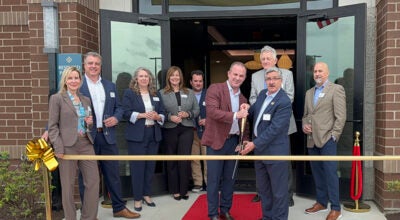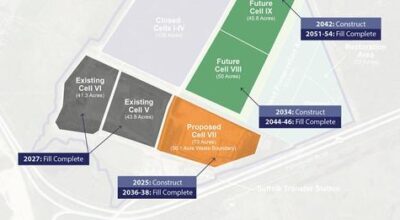All eyes on Route 460
Published 8:39 pm Saturday, May 2, 2015
When the McAuliffe administration moved to terminate Virginia’s contract with a private consortium to improve U.S. 460 last month, for many, the drawn-out, troubled project’s future instantly became even more uncertain.
Announcing the decision, state Transportation Sec. Aubrey Layne cited differences with U.S. 460 Mobility Partners over how much credit the state should be due to apply against its new plan for the project.
The contract was signed for a limited-access, four-lane toll road running the 55 miles between Suffolk and Petersburg, at an estimated cost around $1.4 billion.
But 15 months ago, acknowledging that the U.S. Army Cops of Engineers wasn’t going to issue a permit to allow the disturbance of more than 400 acres of wetlands, the then-new administration put the brakes on contract spending, announcing it would explore new options for the road.
Out of that came a plan that the Corps signaled it could support — a new four-lane road stretching about 12 miles from Suffolk to west of Windsor, and thereafter improving the existing road a further five miles, including a new bridge across the flood-prone Blackwater River.
In an interview with the Suffolk News-Herald last week, Layne sought to clear the air regarding how the new plan — one now without a contract — would advance.
Last year, the Virginia General Assembly passed and Gov. Terry McAuliffe signed into law HB 2, introducing a new prioritization process for projects funded by the Commonwealth Transportation Board.
It requires the CTB to consider, at a minimum, congestion mitigation, economic development, accessibility, safety and environmental quality.
While the legislation requires the scoring process to be applied from July 2016, “the law encourages earlier implementation if possible,” Layne said.
A project that’s fully funded, has been through the environmental process and is under contract is not subject to HB 2, Layne said, but since the contract to improve Route 460 was terminated and a new procurement started, “it’s appropriate that HB 2 would apply.”
The Virginia Department of Transportation is currently working to obtain the Corps permit, and though the federal agency has signaled it can support the scaled-back new plan, it will be several months before state officials can announce they have a permit or have been denied one, according to Layne.
Meanwhile, VDOT is “reaching out to those individuals impacted, trying to move to lessen the impacts,” he said.
Once the Corps permit is in hand, the next step would be a new procurement, Layne said. If the whole project or most of it has to be designed to get the permit, it’ll be a design-bid-build; but if a substantial amount does not have to be designed, then procurement will follow the design-bid format, he said.
If it’s design-bid, Layne said, “The contractor will have more leeway to determine where the road actually goes.”
During the procurement phase – probably late fall to early spring — the CTB would score the project under HB 2, Layne said, measuring it against “100 or more” projects statewide.
“I’m not going to pre-judge the results,” Layne said. “The CTB uses this scoring as a guide. At the end of the day, it can fund lower-scored projects; it just has to justify its actions.
Layne said that the CTB doesn’t just consider the “raw score” in deciding what to fund, “it’s also the ultimate cost of the project.”
“Ample” state and federal funding has been secured for 460, he said, all of it non-regional, meaning the Hampton Roads Transportation Accountability Commission wouldn’t be involved, nor tolls.
According to Layne, bidding during procurement would be hot, “drastically” lowering the current project estimate of $375 million to $425 million.
Layne said he’s agnostic when it comes to 460 — neither for nor against it. “We need to bring it to its logical conclusion,” he said.
Some have questioned how a plan scaled back so heavily from the previous one could possibly still achieve the project’s stated purpose and need, which includes economic development, safety and congestion mitigation, and increasing evacuation capability.
On the major sticking point for many — evacuation — he said the federal authorities are concerned with getting people out of harm’s way, not so much whether they can find accommodation and avoid traffic snarls once they reach safety.
VDOT has the right to continue to improve 460 west of Zuni, Layne said, but that wouldn’t be part of the current project.
Layne clarified that the 60 days of mediation that last month’s notice of contract termination started the clock ticking on is about “how much they owe us.”
“When we gave them the notice, it was terminated,” he said.
State officials think Mobility Partners owes “a substantial amount” of the $250 million it billed, according to Layne. “The payments schedule doesn’t equal what was earned revenue,” he said
Layne said he suspects Virginia will know by “probably this time next year” whether the plan for 460 will advance.






